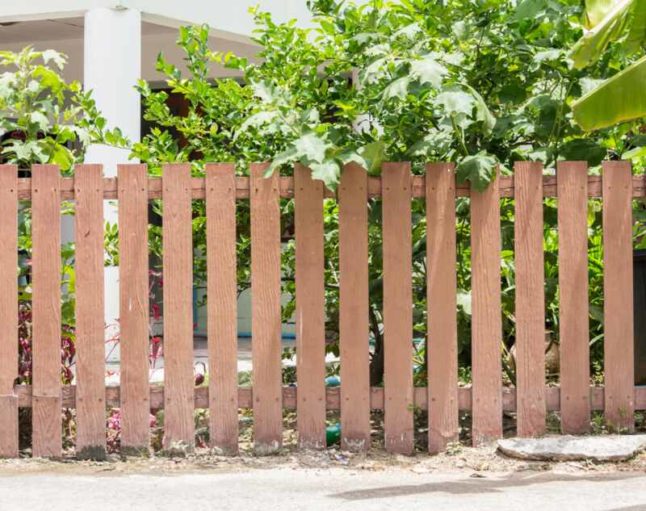All Categories
Featured

A fencing acts as greater than simply a limit; it offers privacy, protection, and improves the curb allure of your property. Like any kind of outside framework, a fence will undoubtedly encounter wear and tear from the elements and age. While regular upkeep can extend the life of your fence, there comes a time when repairs no much longer are enough, and it's time to take into consideration replacement. How do you know when your fence is beyond conserving? Below are some essential indications that your fencing might need to be changed.
- Noticeable Damage or Put On. One of the most noticeable indicators that your fence is nearing the end of its lifespan is visible damages. This might consist of cracks, divides, bending, or damaged areas. Wooden fencings are particularly susceptible to splitting or splintering over time, while plastic fences can create cracks. Steel fencings, like chain-link or functioned iron, can additionally come to be harmed through rust or bent messages. If the damages is architectural or extensive, repairing individual sections might not suffice, and changing the fencing comes to be required.
- Rot and Decay. If you see that parts of your fence really feel soft to the touch or if you see mold or fungus expanding, it's an indicator of rot. Small rot can occasionally be repaired, comprehensive degeneration, particularly near the base of fence messages, can jeopardize the stability of the entire fence.
- Leaning or Tilting. A leaning fence is a clear indication that something is wrong with its structural support. With time, posts might change because of soil disintegration, water damage, or perhaps origin growth from nearby plants. While minor tilting can sometimes be dealt with by correcting the posts and safeguarding them, comprehensive leaning commonly suggests that the posts have actually been damaged past fixing. If the fencing remains to lean regardless of efforts at adjustment, it may be time to replace the damaged areas or the entire fence.
- Corrosion or Rust (For Metal Fencings) Particularly one made of functioned iron or steel, corrosion or corrosion can deteriorate its framework if you have a steel fence. While minor corrosion can commonly be removed and treated, comprehensive corrosion that endangers the fencing's stability is a sign that substitute is necessary. If the corrosion has actually spread considerably or weakened the metal, it can make the fencing hazardous or unattractive. It's far better to replace a heavily rusted metal fence than to proceed attempting repairs.
- Insect Infestations. Wood fences are an usual target for bugs like termites, carpenter ants, and rats. These insects can cause comprehensive damages by tunneling into the wood and deteriorating its framework. If you see little openings, sawdust stacks, or real insects staying in your fence, it's necessary to address the invasion as soon as possible. In instances where the damage is extreme, the afflicted fence posts or boards may need to be changed to restore the fencing's stability.
- Difficulty Maintaining the Fence. If you locate yourself constantly making repair work to the very same locations of your fencing, it could be an indication that the fence is past its prime. Fencing upkeep can be time-consuming and expensive, specifically when repairs are no more efficient. If you're spending more money on patching up old areas than you would on a complete substitute, it's time to think about replacing the fence altogether. A brand-new fence will certainly offer more long-term worth and reduce the regularity of repair services.
- Age of the Fence. While the life expectancy of a fencing can vary depending on the climate, area, and product conditions, many fencings last between 15 and 20 years. If your fencing is approaching or surpassing its expected life-span and revealing indications of wear and tear, it may be time to change it.
- Outdated Appearance. Sometimes, a fence merely becomes obsolete, no more matching the style or requirements of your residential or commercial property. With time, your preference, the landscape, or the design of your home may transform. , if your fencing no longer complements your residential or commercial property or fulfills your demands-- such as privacy, protection, or appearances-- it may be time to think about a replacement.. New fencing materials and designs are offered that deal enhanced visual, resilience, and performance appeal.
- Fencing No More Offers Its Purpose. Your requirements for a fencing can advance over time. In such cases, changing the fencing with one that meets your present needs is the finest selection.

Verdict. A fence is an integral part of your home's outside, offering personal privacy, style, and safety. Nevertheless, like any type of framework, it will at some point show indicators of aging or damages. If you notice any of the signs noted above-- visible damages, rot, leaning, pest problems, or an outdated look-- it might be time to change your fence. Replacing an old, damaged fence can improve the overall value of your residential or commercial property, improve safety, and offer your backyard a fresh look. By watching out for these indications, you can make an informed choice regarding when it's time to purchase a new fence.
Latest Posts
About Us: Explore the Story Behind Montclare Auto Repair ’s Expertise & Service
Published Apr 22, 25
2 min read
Montclare Auto Repair: A Reliable Auto Service Provider in Montclare
Published Apr 22, 25
2 min read
Make Your Desire Fence a Reality with Easy Financing
Published Apr 22, 25
1 min read
More
Latest Posts
About Us: Explore the Story Behind Montclare Auto Repair ’s Expertise & Service
Published Apr 22, 25
2 min read
Montclare Auto Repair: A Reliable Auto Service Provider in Montclare
Published Apr 22, 25
2 min read
Make Your Desire Fence a Reality with Easy Financing
Published Apr 22, 25
1 min read